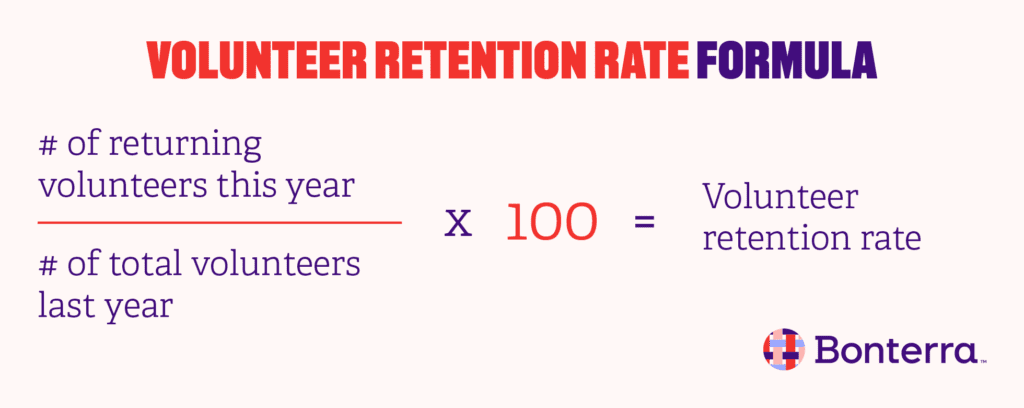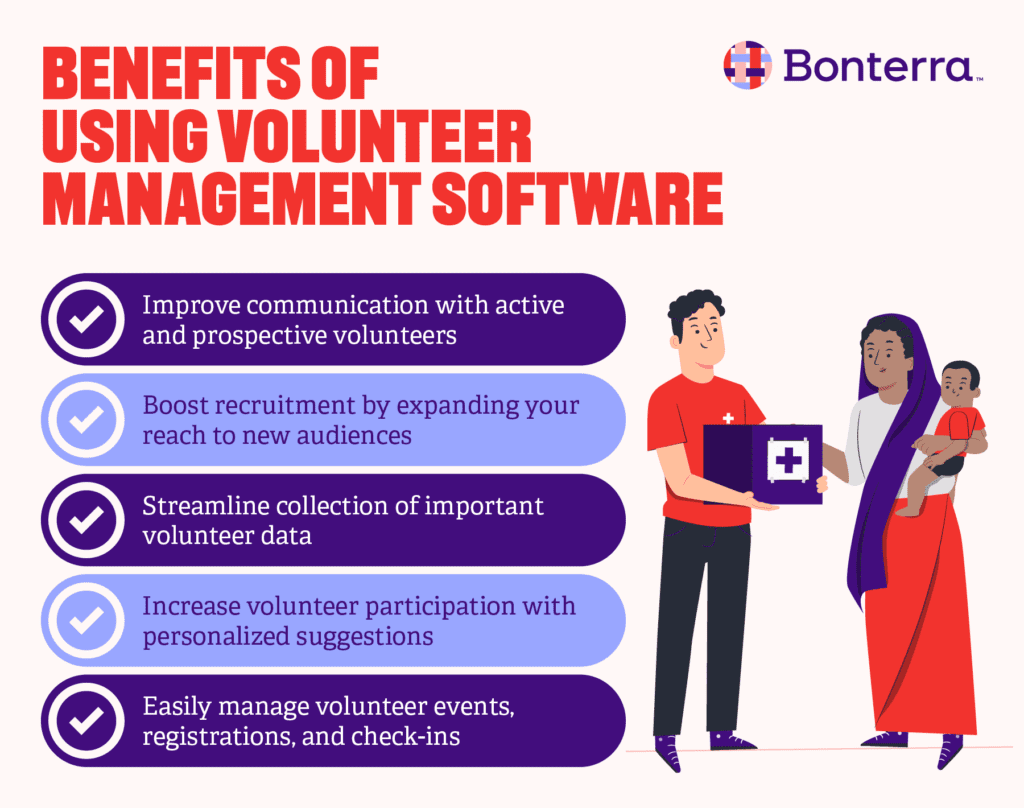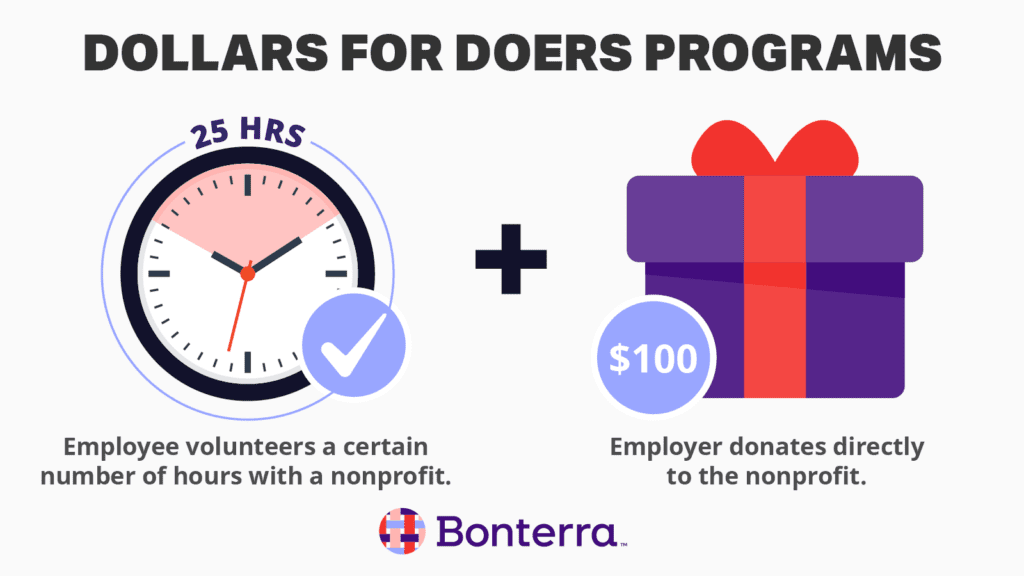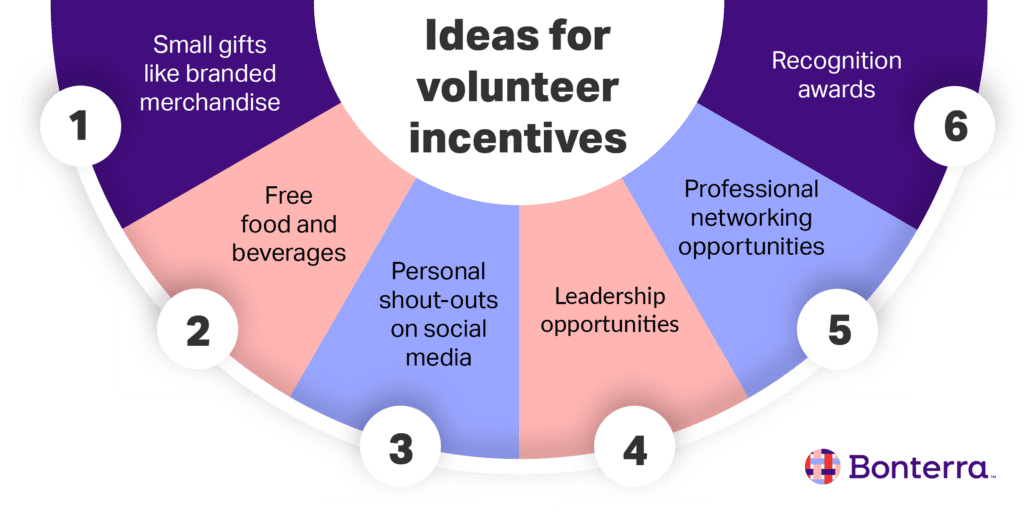Top 11 volunteer retention strategies that actually work

You’ve put in the hard work to acquire new volunteers who are passionate about increasing your nonprofit organization’s impact. Now it’s time to consider how you can improve your volunteer management efforts to strengthen relationships with them and retain their support long-term.
Without a dedicated volunteer retention strategy, these efforts can easily fall by the wayside. That’s why we’ve compiled this guide — we’ll cover the basics of volunteer retention and explore several proven strategies for maintaining positive, impactful volunteer relationships.
Volunteer retention essentials
Before we dive into our list of strategies, let’s answer any questions you may have about volunteer retention.
What is volunteer retention?
Volunteer retention refers to an organization’s ability to keep volunteers involved long-term and the strategies they use to do so.
If a supporter volunteers one year and then returns to volunteer again the next year, this volunteer has been successfully retained. With effective volunteer retention strategies, you’ll keep volunteers engaged enough that they return again and again to continue supporting your organization with their time and resources.
Why is volunteer retention important?
Retaining volunteers is essential to building a strong support coalition for your nonprofit. Over time, you can also look forward to a variety of volunteer retention benefits, including:
- Less need for recruitment. When volunteers stay with your organization long-term, you won’t need to allocate as much time to recruiting and training new volunteers as you’ll already have a reliable team at the ready.
- A more efficient volunteer program. Just like with donors, it’s more expensive to recruit new volunteers than it is to retain existing ones. By increasing your volunteer retention efforts, you’ll save your team time and money on recruitment.
- Volunteers becoming donors. Many nonprofits see volunteers and donors as two distinct groups of supporters. However, your passionate volunteers can become reliable donors, just like engaged donors can join your volunteer program.
- Mentorship opportunities. Volunteers with years of service under their belts can mentor and train new volunteers, reducing staff responsibilities. Experienced volunteers can provide new volunteers with tips and a warm welcome into your supporter community.
- Reliability. When you have a reliable base of trusted volunteers, you can depend on them to show up for their scheduled shifts and answer any last-minute calls asking for help. Often, long-term volunteers are some of your organization’s biggest ambassadors and will represent your nonprofit well to new audiences.
Ultimately, the larger and more dedicated your network of volunteers is, the more opportunities your nonprofit will have to grow, thrive, and fulfill its purpose.
How do you calculate volunteer retention?
Measure retention by calculating your volunteer retention rate, the rate at which volunteers continue to work with your organization over time. It can be calculated year over year or even from one volunteer opportunity to the next, depending on your needs and the scale of your operations.
To find your organization’s volunteer retention rate for a given year, use this formula:

- Determine how many of last year’s volunteers returned to volunteer again this year.
- Divide the number of returning volunteers by the total number of volunteers you had last year.
- Multiply the number by 100 to get your volunteer retention rate.
Calculate your volunteer retention rate periodically and compare it with your previous performance. If your retention rate suddenly spikes or drops, analyze your data further to determine what may have caused the change.
Common reasons why volunteers quit
Volunteers decide not to return for a myriad of reasons, most of them unrelated to your nonprofit. For instance, one study that analyzed volunteer retention in Canada found the most common reasons for volunteer lapse to be:
- Moving out of the area (26.3%).
- Too many school or work commitments (21.3%).
- Generally too busy (16.3%).
- Unknown reasons (10%).
- Personal or family circumstances (6.3%).
- Issues with the volunteer program (5%).
- Giving their time to a different organization (3.8%).
Of these top seven reasons why volunteers quit, only two represent a true problem with the organization’s volunteer program itself. Most of the time, volunteers lapse due to personal reasons like outside commitments and everyday life changes that your nonprofit just can’t control.
But even though most volunteers quit due to their own circumstances, some cite issues with their volunteer program, such as not understanding their impact or not feeling welcome in the organization’s community. If you’re seeing low volunteer retention rates, it’s worthwhile to investigate why volunteers left by asking them directly. Send out a survey to gather responses about volunteers’ reasons for quitting and learn how you can retain future volunteers.
Volunteer retention strategies to implement
Use these tested volunteer retention strategies to holistically improve your volunteer program and increase retention rates.
1. Use volunteer management software.
Volunteer management software is essential for volunteer retention activities, such as data tracking and scheduling. These software solutions enable you to automatically capture volunteer data from integrated forms, personalize and streamline volunteer communications, and so much more. With some tools, you can even host and manage online volunteer events within the same platform.
All of these features help you build stronger relationships with volunteers that lead to increased retention. Using quality volunteer management software also comes with impactful benefits like:

- Improving your communication with volunteers. Automatically schedule messages, remind volunteers of upcoming shifts, and thank volunteers for signing up. Also, use data to discover new segments for highly engaging and personalized messages.
- Boosting volunteer recruitment success. Use your platform’s social sharing features to increase volunteer engagement and recruitment at the same time. Encourage volunteers to invite friends who may become loyal volunteers themselves.
- Streamlining data collection. With integrated forms, you can pull data straight into your CRM to keep track of important details and success metrics.
- Increasing volunteer participation. Features like personalized dashboards and volunteer event recommendations help your volunteers find and sign up for the opportunities they’ll enjoy most.
- Facilitating volunteer event management. Use your software to handle registration, check-in, or entire online volunteer events.
Fundraising solutions like ours, built on EveryAction and Network for Good, helps you access all of these benefits and more. By integrating volunteer management tools with donor management, marketing, and fundraising features, you can handle your nonprofit’s most important supporter interactions from one unified platform.
Want to learn more? Request a demo to see how Fundraising and Engagement can make a difference for your organization.
2. Make a great first impression.
If you spend time and resources recruiting volunteers who you only see once, there’s a good chance that you could be making more out of your first impression.
A great first impression starts with hosting engaging, effective volunteer onboarding and training sessions. Some volunteer roles and responsibilities require hours of in-depth, hands-on training, but oftentimes, short introductions do the trick. No matter what, make sure that every new volunteer receives:
- A warm welcome. According to a 2023 study, volunteers say the best way organizations can improve their support is to be more inclusive. Encourage staff to include volunteers from day one by saying hello and giving a brief explanation about their role at your nonprofit. Be sure to introduce new volunteers to a designated staff member they can go to for help, and consider hosting a volunteer mixer if many people start on the same day.
- Background information about your nonprofit. New volunteers may only know the overview of your work when they join. Explain the most essential parts of your nonprofit’s work during onboarding, like your organization’s purpose and where your volunteer program fits into your efforts.
- Role or task descriptions. Outline role and task descriptions on a cheat sheet so volunteers come away from their first day knowing exactly what’s expected of them. Include each role’s main responsibilities and ways they might be asked to step in as needed.
- A tour of the facility or venue where they’ll be working. Introduce volunteers to their new environment with a tour, and plan to have a few of your staff members greet them.
- A handout that sums it all up. The first day of volunteering can be overwhelming. To make sure your volunteers feel comfortable and prepared, provide a handout that covers everything they need to know about volunteering with your organization.
A high-quality training experience can also make it easier to recruit new volunteers, contributing to a self-perpetuating cycle. Your new volunteers will talk to their family and friends about their excellent onboarding experience, promoting your program through word-of-mouth.
3. Get to know volunteers personally.
Your volunteers are passionate individuals who bring their own unique experiences to your nonprofit organization. Discovering each person’s perspectives, interests, and stories will help you cultivate lasting relationships that inspire them to return.
Essentially, the better you understand individual volunteers, the more easily you’ll be able to retain them. Get to know volunteers by sending a survey before they participate in their first opportunity to ask about their interests, skills, background, and availability. Then, use your volunteer management software to store volunteers’ personal information and preferences in robust volunteer profiles — it’s helpful for streamlining the shift-matching process later.
Building relationships is one of the most important aspects of the volunteer management process. Once your volunteers understand that you want to get to know them, they’ll begin to care more about what you care about: your purpose.
4. Tailor volunteer offerings and communications.
Just as you personalize your nonprofit’s fundraising appeals, you should tailor volunteer offerings to individual preferences whenever possible. Use information from your database and the survey answers you gathered to segment volunteers for more relevant communications.
When scheduling your volunteers and inviting them to participate in your opportunities, do your best to align tasks with individuals’ needs and skill sets.
For example, you might schedule older volunteers to write and mail donation requests while you invite more able-bodied, active supporters to do physical tasks in your community garden. Or, if you have a segment of senior volunteers who love working in the garden, empower them to do so while meeting any accessibility needs they may have.
Give people ways to contribute that are not only accessible to them but that they personally enjoy, and they’ll be much more likely to have a positive experience and stick around.
5. Demonstrate the impact volunteers make.
Volunteers want to know that the time they donate to your nonprofit directly impacts the lives of others. Here are a few steps you can take to engage volunteers and demonstrate the impact they’re making at your nonprofit:
- Highlight your volunteer program’s effectiveness. Share impact reports that include concrete details about how volunteers’ work supported your programs. In training sessions, highlight past projects volunteers have completed, what your volunteers are currently doing, and any metrics you have about your volunteers’ work.
- Start each volunteer opportunity with a quick recap of how the activities support your overall purpose. When first assigning volunteers to a new responsibility, give a rundown of why the task is important, what they need to do to succeed, and how it helps your organization fulfill its purpose.
- Use volunteer hour tracking tools. Track volunteer hours both for your own records and to help out anyone who needs to volunteer for a specific number of hours. When volunteers cross certain hour thresholds, let them know and celebrate what they’ve accomplished in the time spent with your organization.
Fostering volunteers’ passion for your cause will keep them engaged in your program for the long haul. If you can spark that passion, you’ll be well on your way to boosting volunteer retention.
6. Promote corporate volunteering opportunities.
Many of your volunteers may not know that their employers will support their efforts financially. This is because more and more corporations are implementing volunteer programs as part of their corporate social responsibility efforts, which engage employees and boost their business reputations.
A few common workplace giving programs that center on volunteering are:
- Volunteer time off (VTO): Some companies offer specific paid vacation days for volunteering, known as VTO. These programs allow employees to volunteer without worrying about using up their regular vacation days or volunteering after hours.
- Team volunteer outings: One volunteer or team lead might organize a few hours or an entire day where employees volunteer together at a specific organization. The company gets an impactful team-building opportunity, and your nonprofit receives a large group of volunteers for a day.
- Volunteer grants: Also known as Dollars for Doers, volunteer grant programs help employees supplement their volunteering impact with monetary support from their employer. For instance, if an employee volunteers for 25 hours with your nonprofit, their employer might donate $100.

According to employee volunteering statistics, most of these programs only have an average participation rate of 33%. This means it’s vital to promote these opportunities to your supporters. Volunteers will likely love the chance to maximize their impact with their employer’s help.
7. Enable flexible self-scheduling.
To accommodate your volunteers’ pre-existing time constraints, let volunteers sign up on their own time and send out your volunteer schedule far in advance. Self-scheduling gives volunteers time to confirm their commitments early and let their supervisor know if they’ll need to reschedule.
Additionally, some people feel more comfortable knowing that a particular volunteer opportunity has no long-term commitment. Provide some short-term, digital, or less labor-intensive opportunities. For instance, you might let volunteers schedule time to help input information into your online donor database, operate a virtual helpline, or draft donor thank-you emails.
8. Offer incentives.
Volunteering comes with plenty of appealing personal benefits, such as meeting new people and improving mental health. However, your volunteers aren’t thinking about these benefits all the time and may need an extra boost of motivation to continue their support.
That’s where incentives come in. Consider offering small but exciting incentives for regular volunteers, such as:

- Small gifts like branded t-shirts, mugs, or water bottles. Send out items for free as a thank-you or use them as prizes to motivate volunteers—even better if you can customize them to your volunteer program.
- A free luncheon or dinner. This can be part of a thank-you celebration or your welcome strategy to get new volunteers acquainted with each other and your staff.
- Social media shout-outs. Publicly recognize volunteers on social media and tag them in the posts. Just be sure to get their permission beforehand and ask for a quote about their personal connection to your cause.
- Leadership opportunities. Some people volunteer because of the skills they’ll gain. Help volunteers improve their leadership skills by inviting select individuals to serve in leadership roles.
- Networking opportunities. Offer special opportunities where volunteers can meet leaders in your community and expand their personal networks.
- Recognition awards. Consider offering a “Volunteer of the Month” award or hosting an end-of-year award ceremony to celebrate specific volunteers’ achievements and milestones.
As you can see, these incentives don’t have to be large-scale, expensive endeavors. Sometimes, just adding “free pizza!” to your volunteer flyers can be the motivation volunteers need to return.
9. Give volunteers a professional boost.
If you provide volunteers with an experience that gives them a professional leg up, you’ll become an irreplaceable career development resource. To do so, try:
- Offering a valuable training experience that enhances volunteers’ skills. This might include hard skills like coding, carpentry, and graphic design or soft skills such as public speaking and project management. Survey your volunteers to learn what skills they’re interested in improving.
- Acting as a reference for volunteers. Many volunteers would appreciate having a character reference from a volunteer coordinator when applying for jobs or internships. You can even endorse volunteers for relevant skills on LinkedIn.
- Providing dedicated volunteers with more opportunities. Offer experienced volunteers the opportunity to take their engagement to the next level by becoming peer leaders. They can grow their leadership skills by directing a small group of volunteers or helping out with your training process.
By supporting your volunteers’ personal and professional growth, you’ll show them that staying involved with your cause can provide long-lasting benefits.
10. Ask for and act on feedback.
To consistently improve, continually reassess your volunteer program and determine how to create a more positive experience for volunteers. You can better understand the volunteer experience in a number of ways, such as having your staff work occasionally alongside volunteers. However, the most efficient way to learn how you can help volunteers is to ask them directly.
Sending feedback surveys allows you to source improvement ideas directly from volunteers and engage them at the same time. By asking for feedback, you’ll show volunteers that you care about their opinions and genuinely want to improve your programs to better suit their needs. Just don’t forget to follow up with volunteers whether you act on their feedback or not — this shows you took their feedback seriously.
11. Show appreciation often.
Sometimes, all it takes is a simple “thank you” to show volunteers that you value their contributions. Send thank-you messages regularly, and try out new volunteer appreciation ideas from time to time to show volunteers gratitude in new ways. These might include:
- Handwritten thank-you cards from staff or beneficiaries.
- Thank-you videos featuring your volunteer coordinator and other staff members.
- Virtual appreciation events, such as a happy hour or trivia game.
- Celebratory volunteer galas at the end of the year or a major campaign.
- Highlighting individual volunteers in your email newsletter.
Adopt a combination of these ideas, and take notes in your CRM when a volunteer seems especially happy with a certain tactic. Align future appreciation efforts with these preferences to ensure you appreciate volunteers in the ways that resonate with them the most.
Securing long-term support with positive volunteer experiences
Volunteer retention is an ongoing process that requires constant iteration. By trying out these strategies and keeping track of their success within your volunteer management software, you can determine the best ways to boost volunteer retention among your unique support base.
Boost volunteer recruitment, engagement, and retention with Bonterra Fundraising and Engagement.
Work with Bonterra



